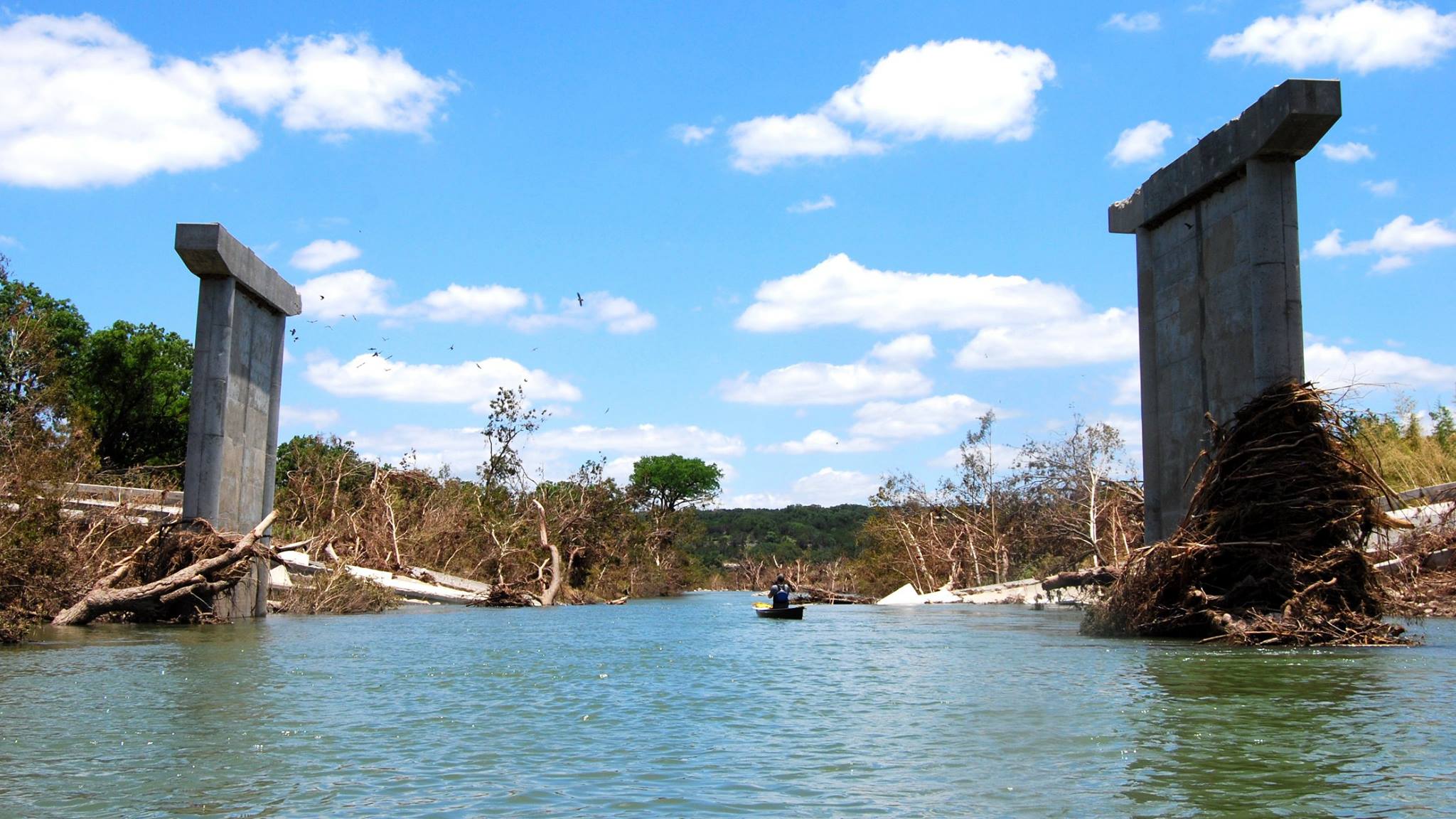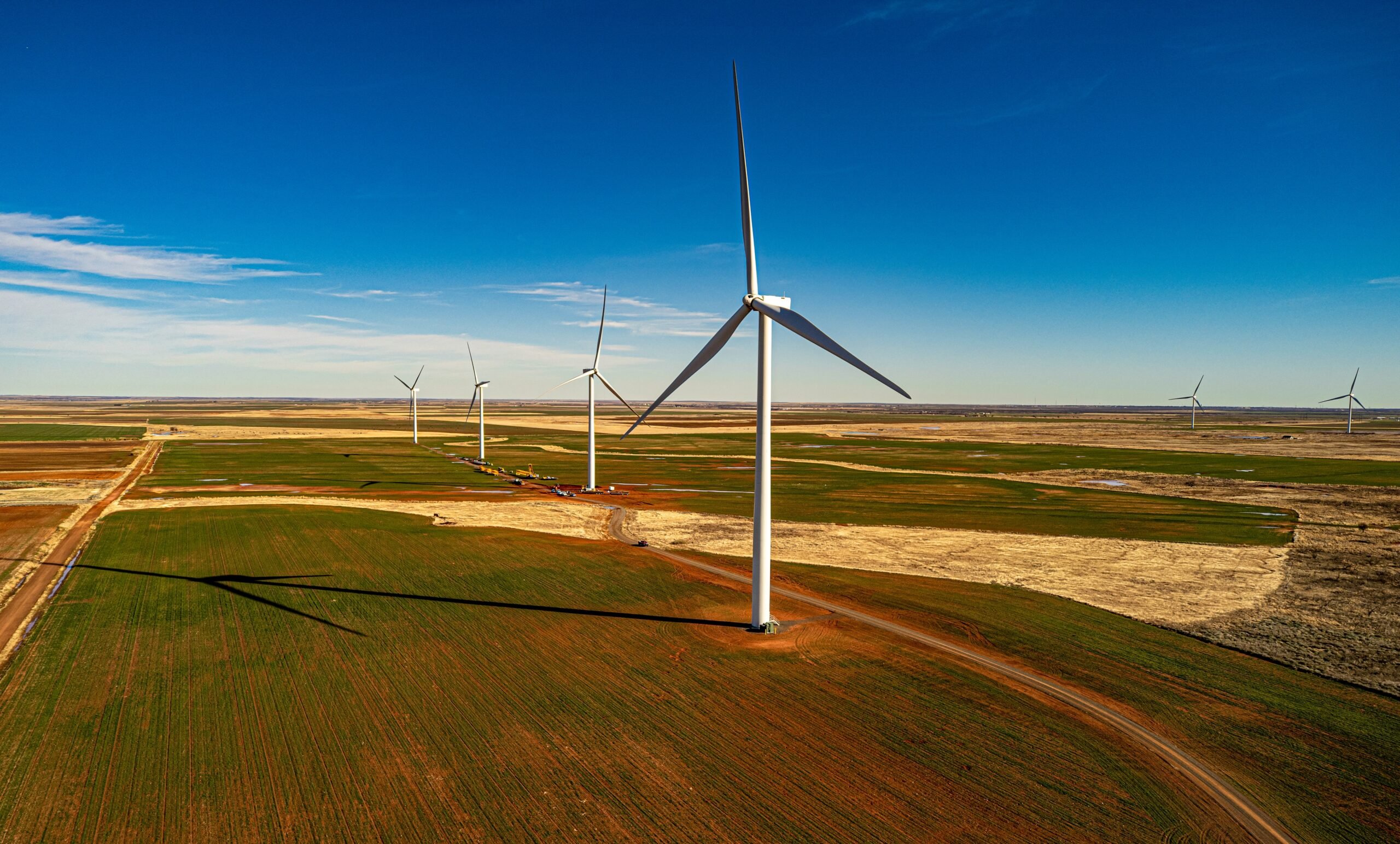
Left Unchecked, Climate Change in Texas Will Cost Businesses Billions

Above: The Fischer Store Bridge near Wimberley was toppled by the Blanco River floodwaters. A new report shows that the economic damage of climate change in Texas could be in the tens of billions of dollars.
Without action to curb greenhouse gas emissions, the ravages of climate change could cost Texas tens of billions in the coming decades, according to a new report by the Risky Business Project, an initiative co-founded by former New York City Mayor Michael Bloomberg. The report, released today, focuses on the economic risks of climate change for 11 southeastern states and Texas, estimating losses from climate-related extreme weather events, increases in heat-related deaths, rising energy costs and other troubling effects.
“Texas is particularly vulnerable to these impacts because it’s a state where the economy is based on a lot of physical infrastructure,” said Kate Gordon, the author of the report. “Texas has a lot of really valuable energy and manufacturing infrastructure — and that is the kind of infrastructure that is very, very vulnerable to climate change because it can flood, it’s more expensive to cool [during extreme heat],” and it’s expensive to replace if damaged or lost, she said.
Founded in 2013 by Bloomberg, hedge fund billionaire and environmentalist Tom Steyer and former Treasury Secretary Henry Paulson, Risky Business takes a business-minded approach to calculating the bottom-line of climate change. The group’s reports don’t focus on climate science or make policy recommendations. Instead, they employ a quantitative risk assessment for climate change, assuming we continue along our current emissions trajectory. Before tackling Texas and the southeast, the group released similar reports about California and the Midwest.
The latest report, “Come Heat and High Water: Climate Risk in the Southeast and Texas,” focuses on the states most vulnerable to climate change, said Gordon, vice chair of climate and sustainable urbanization at the Paulson Institute.
Extreme heat and sea-level rise are expected to have the biggest impacts on Texas, the report finds. The agriculture and construction sectors face crippling losses from rising temperatures, and sea-level rise will lead to significant property loss. The number of days with temperatures above 95 degrees Fahrenheit will likely nearly double by mid-century, from an average of 43 days to 80 days by 2050, prompting a sharp increase in energy costs and heat-related deaths.
Henry Cisneros, former mayor of San Antonio and former U.S. Secretary of Housing and Urban Development in the Clinton administration, is part of the group’s risk-assessment committee. “We’re going to watch trends, which are now alarming, become truly tragic,” said Cisneros. “Trends that now deal in the realm of the uncomfortable … will spin out of control into an environment where they are unhealthy and economically disastrous.”
The report estimates that annual storm-related losses along the Gulf Coast attributable to climate change — particularly sea-level rise — could increase by up to $222 million in 2030, and as much as $650 million in 2050. Over the next 15 years, an additional $20.9 billion in coastal property would likely be flooded at high tide.
Under a business-as-usual emissions scenario, heat could take the lives of between 136 and 2,578 more Texans each year between 2020 and 2039. According to the Centers for Disease Control and Prevention, there were an average of 658 heat-related deaths each year in the U.S. between 1999 and 2009. (Texas, Arizona and California accounted for 40 percent of those deaths).
Extreme heat, which the report defines as days with temperatures above 95 degrees, is expected to affect labor productivity as workers experience increasing incidences of heat stroke, heat exhaustion and their performance suffers. The decrease in productivity — especially in the agriculture, construction, utility and manufacturing sectors — could cost the Texas economy $12.5 billion each year by mid-century, according to the report. Demand for electricity on the hottest days could also overwhelm the electric grid, leading to a rise in electricity prices for consumers. As a result, by 2050, Texans could spend $3.7 billion more on energy annually.
Increasingly long droughts and rising temperatures will put additional pressure on livestock and could also drive down some crop yields, particularly corn, cotton and soybeans. But there’s one bit of good news among the gloomy predictions: Wheat would thrive in a much hotter Texas. Wheat is expected to withstand higher temperatures and benefit from the “carbon fertilization effect” of increased concentrations of carbon dioxide in the atmosphere.
So… bread, anyone?


